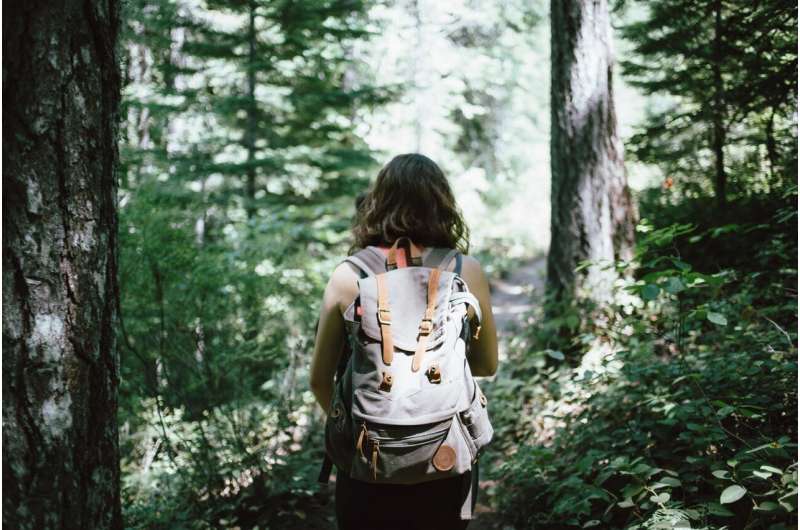
Credit: Unsplash/CC0 public domain
A new study has highlighted the shared joy of experiencing time in nature by surveying visitors to national parks and forests in four different countries. This showed that all five of visitors’ senses were activated in positive ways by their environment.
Led by Professor Emeritus Ralf Buckley from the School of Environment and Science with co-authors Dr. Mary-Ann Cooper from Andrés Bello University and Dr. Linsheng Zhong of the Chinese Academy of Sciences, 100 participants were interviewed on site in Australia. 100 in Chile, and >500 in China, and collected 1,000 relevant social media posts from Japan.
The study“Principal sensory experiences of forest visitors in four countries, for evidence-based nature therapy,” is published in People and nature.
The most important sensory experiences were universal: seeing the shapes and colors of plants; sounds of birdsong, running water and rustling leaves; scents of flowers, trees and earth; taste and temperature of clean air and water; and a hint of bark and rocks.
Professor Buckley said these fine-grained but widespread experiences were the key findings from the studies.
“Spending time in nature is good for our mental health, that’s the idea behind nature therapies,” says Professor Buckley.
“On a national scale, they may save a lot of money. But your health insurance won’t pay for them yet because they require prescribeable products with certified providers and cost codes.
“So researchers are trying to design nature therapy courses where all the costs and components are efficiently packaged together, like an occupational therapy course.
‘But to do that, we need to know what it is about the experience of time in nature that makes us less stressed? That’s what this study did; we asked which specific sensory experiences in nature people found important and memorable, and how that might happen. differences between different people in Australia, Japan, Chile and China.”
These sensory experiences were on a scale broad enough to apply to prescribeable nature therapies in any forest area, but fine enough to be used in future quantitative research to test therapeutic designs, doses and duration.
Professor Buckley said this set them apart from previous research that was either too broad or too fine in scale for practical therapy design.
“We know from previous research that people see their emotions as an important step between senses and well-being, but we don’t yet know whether they are essential,” he said.
“Such characteristics may include activity, group size and guidance, but each of these remains to be tested.”
More information:
Ralf C. Buckley et al., Key sensory experiences of forest visitors in four countries, for evidence-based nature therapy, People and nature (2024). DOI: 10.1002/pan3.10723
Quote: Research shows that sensory enjoyment of nature is universal (2024, September 30) retrieved on September 30, 2024 from https://medicalxpress.com/news/2024-09-sensory-enjoyment-nature-universal.html
This document is copyrighted. Except for fair dealing purposes for the purpose of private study or research, no part may be reproduced without written permission. The content is provided for informational purposes only.
 Healthy Famz Healthy Family News essential tips for a healthy family. Explore practical advice to keep your family happy and healthy.
Healthy Famz Healthy Family News essential tips for a healthy family. Explore practical advice to keep your family happy and healthy.


